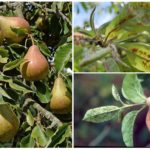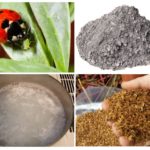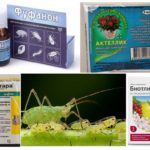How to get rid of aphids on pear
Content
- Aphids on pear
- The fight against aphids folk ways
- Chemicals for aphids
Often, garden trees are attacked by malicious insects. The pear is no exception. The aphid colony settled can not only destroy the crop, but also cause the death of the tree itself. After all, food for insects is vegetable juice, which pests suck from the leaves and inflorescences of the tree.Which leads to twisting, wilting and deformation of the sheet plates. Therefore, in order to take timely measures to protect the tree from the pest, it is necessary to know how to deal with aphids on a pear.
What aphid lives on a pear
Pear can attack various types of aphids. So, besides pear, krasnogallovaya aphid likes to feast on the juice of foliage and young shoots. Gallic aphids on pears inhibit the growth of leaves, with the result that they fold and fall off. A photo of the pest is presented below.
There are species that develop exclusively on the pear. These include brown and green pear-umbrella aphids. The symptom indicating their presence is the bending of the leaf plate along the largest vein from the back side down. So the galls are formed, inside of which the aphids settle. From which the leaves become yellow or red.
On a note!
Feeding on vegetable juice, the aphid on the leaves of the pear exudes a drop, resulting in them becoming sticky and shiny. It becomes the soil for the appearance of soot fungi, from which the surface of the leaf plate is covered with black bloom.
The process of photosynthesis is inhibited, which contributes to the reduction of nutrients.The result is a decrease in yield and frost resistance, which subsequently leads to the death of valuable crops.
How to detect a pest
Signs of the appearance of harmful individuals on the tree:
- Detect aphids on the pear can be a careful inspection, even with the naked eye. Just turn the sheet.
- A striking sign of infestation in a tree is the curved tops of plants.
- Black patina on the plates.
- Deformed shoots.
The presence of these signs indicates that the tree is infected with a dangerous pest and the need to take urgent measures to combat it.
How to fight
In the summer, the invasion of green bugs will be overcome by beneficial insects (ladybirds or golden-eyed) and birds. Fragrant herbs will attract their attention: clover, mint or dill, as well as feeders with tasty treats.
You can also cut off the affected parts of the plant and destroy them along with the pests that settled on them.
On a note!
With a slight accumulation of insects to remove them from the tree can be a strong pressure of water from the watering hose. However, this method can not be applied to young seedlings to avoid damage.
You can get rid of aphids on a pear when using chemical and folk remedies.
Folk remedies
The most effective pest control store insecticides. However, they can negatively affect other cultures and beneficial insects. For this reason, many gardeners prefer to fight folk remedies.
Soap solution
One of the easiest and affordable ways to fight is to handle a pear from aphids with soap and water. Dark laundry soap It is necessary to grate and mix with water in a ratio of 300 g of money per bucket of water. The resulting solution should be sprayed with a pear from aphids.
Ash
You can sprinkle a pear and a solution ashes. The mixture prepared in the same proportions should be boiled, then add 40 g of soap crumbs. The cooled broth is used for its intended purpose.
Potato tops
Potter tops will help to remove the aphids, which are crushed and mixed with 10 liters of water. The mixture is infused for 4 hours, filtered and sprayed with infested trees. Instead of potato tops, you can use tomato tops.
Onion infusion
The infusion of onions is also easy to remove aphids. 200 g of onions (together with the husk) are crushed, placed in a bucket of water and left for a day. Then onion infusion filter and used for irrigation of damaged plantings.
Tobacco Infusion
When a massive invasion of malicious larvae on the tree, use tobacco infusion: shag or tobacco dust (400 g) is mixed with cold water (10 l) and infused for two days. In the filtered solution add the same amount of water and 100 g of soap.
On a note!
Spray fruit trees should be before flowering, or at the end of this process. Treatment during fruit ripening is also not recommended, as it contributes to the deterioration of their taste.
Alcohol infusion
Use of alcohol or a good effect in the fight against pests in the garden vodka. Alcohol is mixed in equal proportions with water and used to irrigate infected trees.
Other folk remedies
In addition to the means discussed above, there are still many effective folk recipes for aphids based on the following components:
- ammonia;
- soda;
- milk and iodine;
- Coca Cola;
- vinegar;
- garlic;
- celandine;
- mustard;
- Green soap;
- Birch tar;
- boric acid.
Chemicals
If folk remedies in the fight against the pest do not give the expected effect, then only chemicals can save the harvest. It would not be superfluous to know how to handle a pear from aphids, in such a situation. The following preparations are in great demand among gardeners:
- Fufanon - acts on insects on contact, not hitting the shoots and fruit of the pear. To prepare the solution using 75 g of substance, which is diluted in 10 liters of water.
- Aktelik is an intestinal drug, the result of which can be seen already after 3-4 days. The full effect is achieved in the event of three weeks. It is not recommended to use the tool during the flowering of pears. The solution is prepared at the rate of 2 ml of product for 2 l of water.
- Aktara remedy - the most powerful means of systemic exposure, which retains its properties even during rain or watering. It is also dangerous for the human body. In connection with what you can not use the drug during flowering, the formation of the ovary and the maturation of the fetus. At 10 liters of water you need 8 g of funds. Biotlin has similar properties.
No less effective Fitoverm, Spark and Tanrek.
Treatment with pesticides is unacceptable during the flowering of pears, as this may cause the death of bees. Despite the quick effect, the chemical aphids on the pear should be used only as a last resort.











